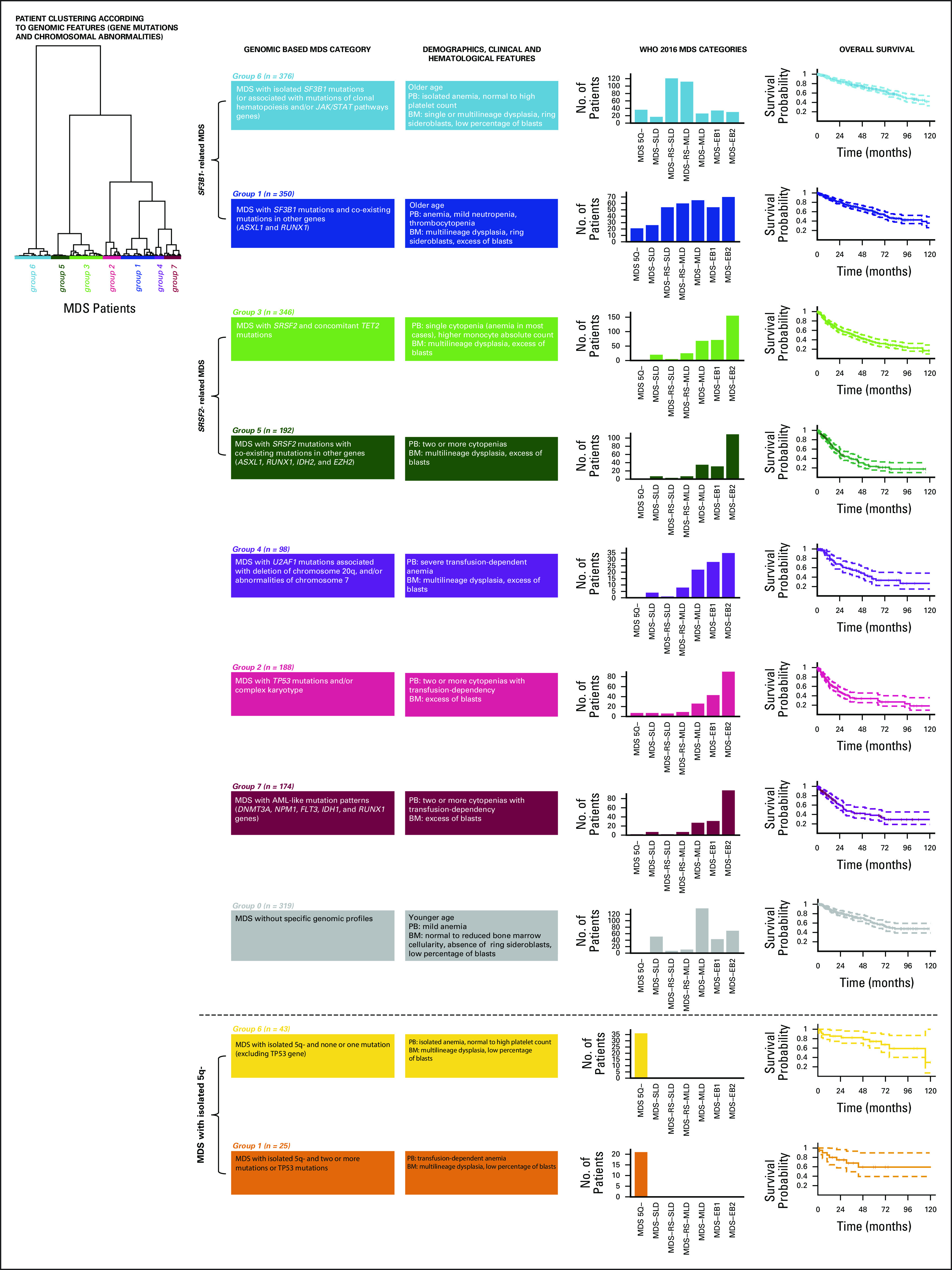FIG A1.

Genomic groups in EuroMDS cohort (N = 2,043) and their relationship with WHO category (defined according to 2016 classification criteria) and overall survival. According to a Bayesian clustering algorithm (Dirichlet processes), patients are classified into eight distinct genomic groups on the basis of the presence or specific mutations and/or chromosomal abnormalities: Group 0, MDS without specific genomic profile; Group 1, MDS with SF3B1 mutations and co-existing mutations in other genes (ASXL1 and RUNX1); Group 2, MDS with TP53 mutations and/or complex karyotype; Group 3, MDS with SRSF2 and concomitant TET2 mutations; Group 4, MDS with U2AF1 mutations associated with deletion of chromosome 20q and/or abnormalities of chromosome 7; Group 5, MDS with SRSF2 mutations with co-existing mutations in other genes (ASXL1, RUNX1, IDH2, and EZH2); Group 6, MDS with isolated SF3B1 mutations (or associated with mutations of TET2 and/or JAK/STAT pathways genes); Group 7, MDS with AML-like mutation patterns (DNMT3A, NPM1, FLT3, IDH1, and RUNX1 genes). These genomic MDS groups significantly differ in WHO MDS categories distribution and in cumulative probability of survival. AML, acute myeloid leukemia; BM, bone marrow; MDS, myelodysplastic syndromes; MDS-EB1, MDS with excess of blasts, type 1; MDS-EB2, MDS with excess of blasts, type 2; MDS-MLD, MDS with multilineage dysplasia; MDS-RS-MLD, MDS with ring sideroblasts and multilineage dysplasia; MDS-RS-SLD, MDS with ring sideroblasts and single-lineage dysplasia; MDS-SLD, MDS with single-lineage dysplasia; PB, peripheral blood; WHO, World Health Organization.
